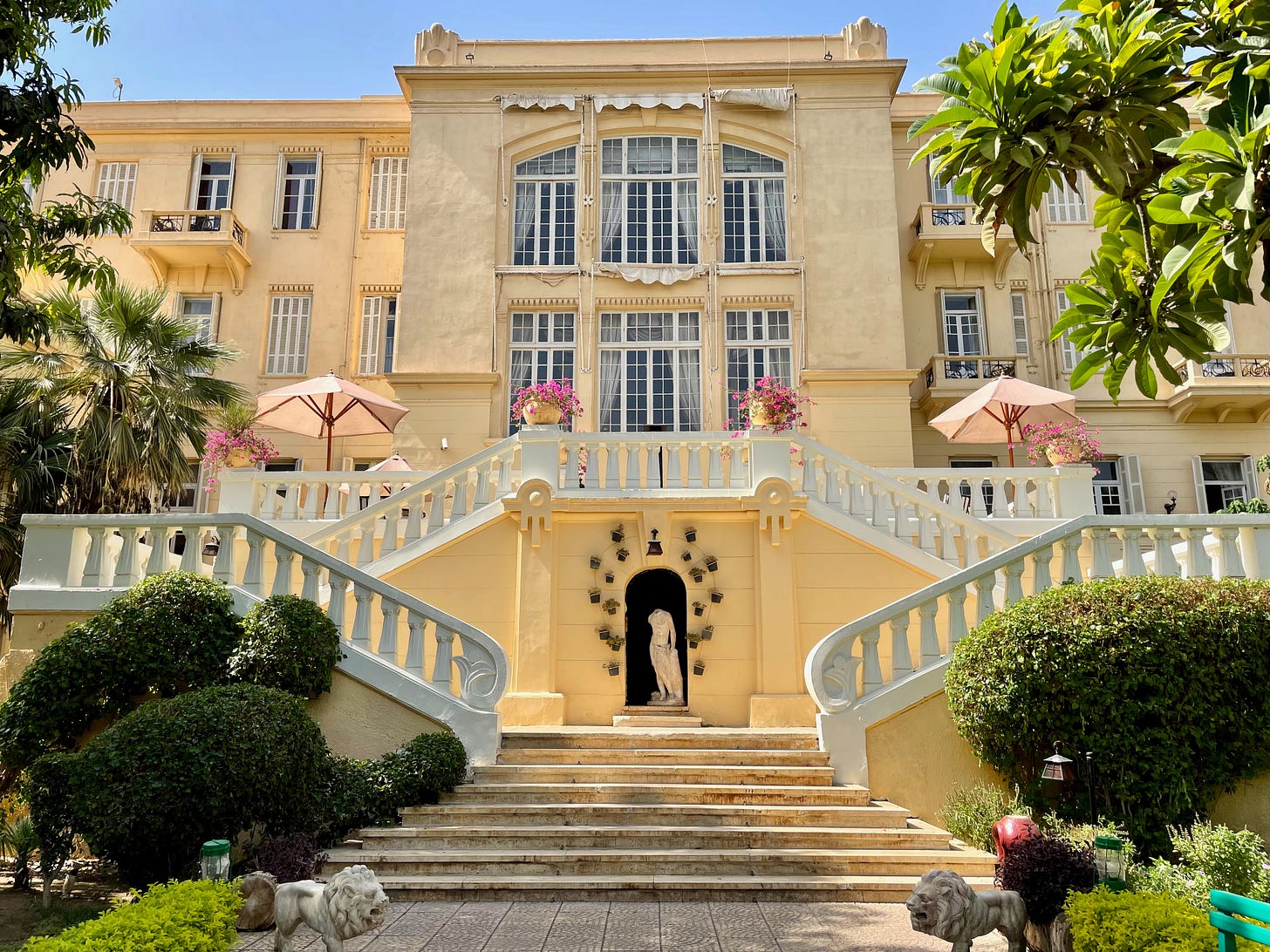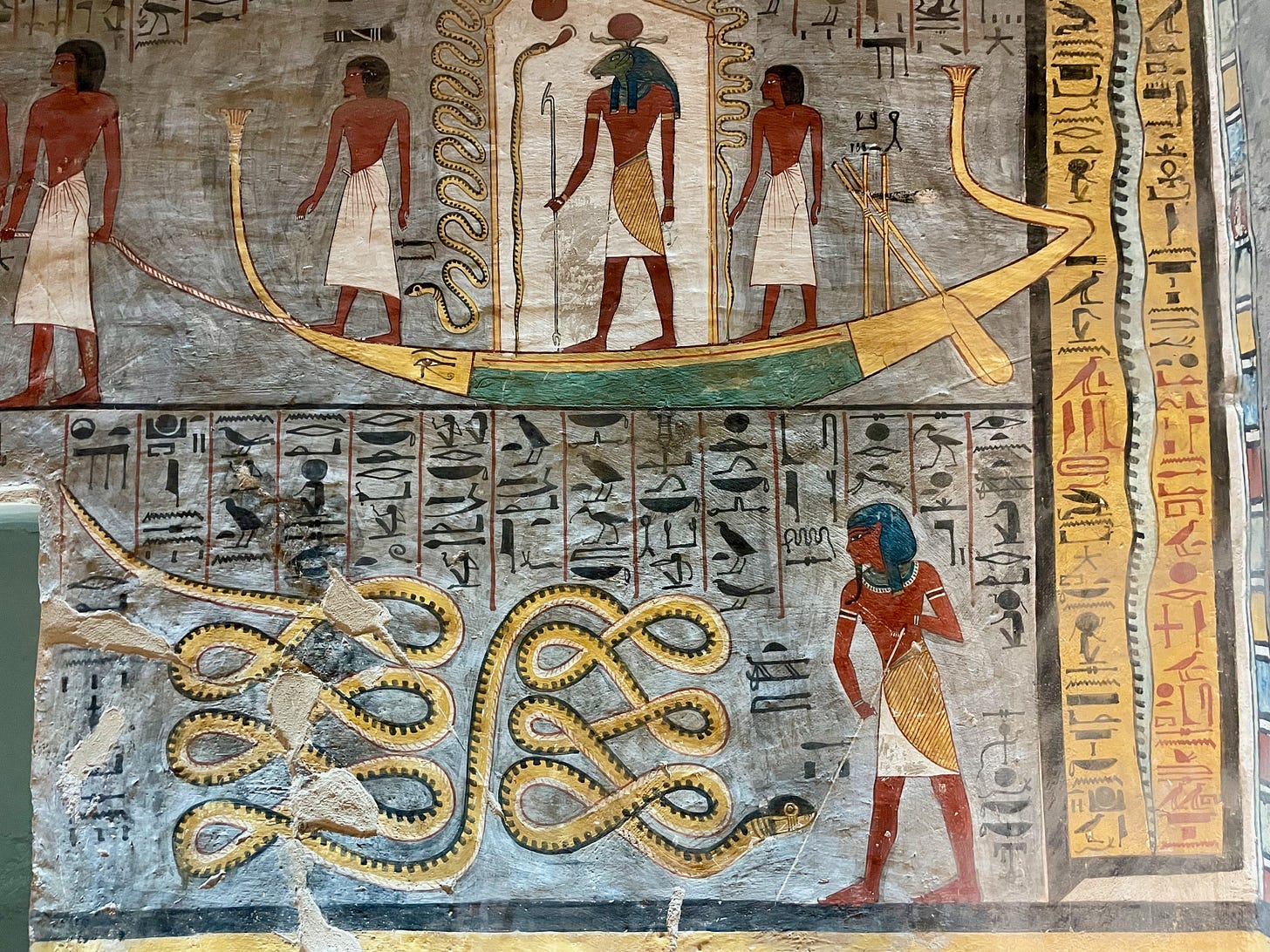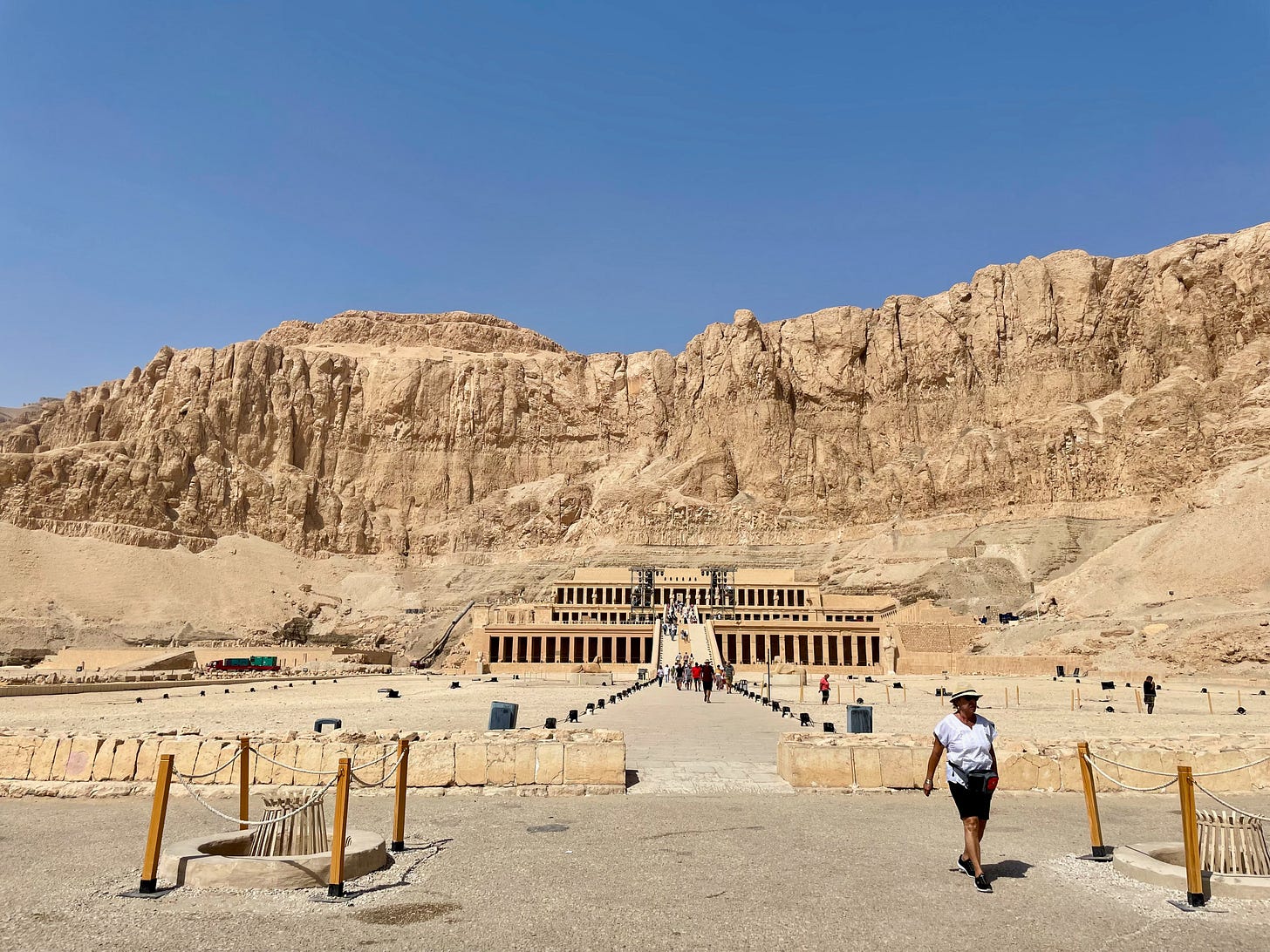Hello, friends! And welcome to the 41 (!) new subscribers who found me this week. You’re joining a small but engaged community here. I can’t wait to get to know you and exchange travel stories—please take a second to say hi in the comments.
I wrote last Tuesday about nailing down what this newsletter is, and I kept thinking about that over the week. I want to connect directly with you all, and while essay writing is my strength, essays don’t always feel like I’m speaking to you personally, even when the subject matter is deeply personal. I also have a full range of human emotions. Sometimes I want to be thoughtful and sometimes I want to be silly! So here’s how I plan to incorporate all those elements into a format that makes sense.
At the top of each issue will be a “letter from the editor” (like this one) where I give you a peak behind the curtain, like a chat between us.
The second chunk will be a feature essay inspired by recent adventures. This is the special surprise inside! The topic (and maybe format) will be different each week, but it will always focus on how new places and experiences take us on inner journeys of discovery and shift our thinking.
Last will be “elsewhere,” a roundup of though-provoking links plus a picture of the everyday kookiness of life in Egypt or wherever else I’ve been lately—just some stuff that we can laugh and wonder at together.
Sound good? Now enough with all that, and back to Luxor…
-Sam
I once thought the colonial era had ended in Egypt. A recent trip to Luxor showed me how mistaken I was. If all the world’s a stage, Egypt is a stage for foreigners in particular. And the Winter Palace hotel, a British-built, French-run Victorian manse on the banks of Nile, is spotlit in the center.
My husband and I had chosen to stay at the Winter Palace while we visited the Valley of the Kings after hearing glowing reviews from everyone we knew—including our guide, Mahmoud, a Luxor native who picked us up from the airport in American Eagle sweats and an ASU hat. “It’s the best in the city,” he assured us as he dropped us off at the foot of the hotel’s grand portico.
We were early for check-in after a long morning of touring with Mahmoud. Upon hearing that our room was not yet ready, we collapsed on a brocade couch in a cloud of dust and sweat. An attendant offered us hibiscus tea, and as I gulped the cold brew to revive myself, I looked around the lobby. It was outfitted in blown glass chandeliers, a grand staircase in decorative wrought iron, and tasseled draperies for the portrait windows that overlooked the terrace and the well-manicured garden, which in turned overlooked the ancient Luxor Temple.
Grand as it was, there was a shabbiness about it, which spoke less of neglect than of wistfulness—of intentional rejection, even, of all things modern. The picture frames all hung slightly crooked, as if no one had dared straighten them since Egypt gained its independence. The Mamluk-style rugs were faded and tattered nearly to the point of being unsalvageable. And a row of Ottoman fez hats, which are rarely worn in modern Egypt, were hooked uselessly on a hall tree in a corner.
I half expected the fictional detective Hercule Poirot to materialize, perfectly in his element amid the gold sconces and chinoiserie lamps. In my luggage was a nearly finished copy of Death on the Nile, the Poirot whodunnit that Agatha Christie wrote in the 1930s while staying at this very hotel.
The book follows a group of fashionable Europeans who use Upper Egypt as a nondescript backdrop while they systematically murder each other. When he isn’t looking for clues to solve said murders, Poirot parades about ancient tourist sites, swatting at the trinket-hawking “human cluster of flies”—the only Egyptian characters in the book, incidentally—while wearing an impractical “silk suit, carefully pressed, and a Panama hat.” As I scrutinized the decor of the lobby, I understood how it might have inspired such a book. The local color of contemporary Egypt was as absent from Death on the Nile as it was from the design of the Winter Palace.
Luckily neither myself nor my husband felt homicidal urges during our stay in Luxor, but our tourist experience bore other similarities to Poirot’s. At every turn we dodged the instagram photoshoots of perfectly coiffed young women wearing silky, backless dresses and gauzy pants in vaguely oriental patterns, like latter-day versions of the detective’s silk suits.
We also witnessed behavior that was far less innocuous—Mahmoud took us first to the tombs of the pharaohs, which were full of rich, vivid color that had survived thousands of years only for our fellow tourists to touch with oily fingertips. (“Unbelievable,” I muttered just loud enough to be heard, even though their behavior was anything but. The Colossi of Memnon, which we drove past on our way to the valley gate, are covered in graffiti left by tourists from Ancient Rome. Defacing Egyptian artifacts is a time-honored tradition.)
From the pharaohs’ tombs we went to the mortuary temple of Queen Hatshepsut, a triple-terraced structure nestled at the base of a sharp cliff where Luxor’s agricultural flood plain meets the mountains. Gentle hills folded in on either side of the temple like a theatre’s wings.
As we came to the start of the temple walkway, it was clear something was afoot: elaborate rigging flanked the top of the ramp leading to the second-story terrace, and floodlights had been strategically placed around the walking paths and at the feet of the statues. “They’re setting up for a fashion show,” Mahmoud told us, though he didn’t know the designer.
It wasn’t until the next day, when we visited the mortuary temple of Ramesses III at Medinat Habu, that we found out who it was. Mahmoud stopped at the entrance for a brief exchange in Arabic with the guard, then turned to us excitedly.
“It’s Stefano Ricci,” Mahmoud said. “That’s who’s having the show at Hatshepsut’s temple. He’s Italian. Have you heard of him?” I didn’t have the heart to tell him no, I hadn’t. “This is very good for Luxor,” Mahmoud said. He was right. Hosting an Italian designer’s runway show would bring international attention and prestige. But I had to wonder whether an Egyptian designer would have been afforded the same opportunity, or if such things were the exclusive right of Europeans.
When we returned that night to the Winter Palace, the lobby was abuzz with the name Stefano Ricci. He had the whole city in an uproar; in addition to the show, there was to be a swank dinner party that night at Luxor Temple. Guests had begun to gather near the check-in desk in glistening tuxedos and evening gowns. Staff flitted to and fro in the background, stuffing gift bags with leather key rings, perfumes, and Panama hats fit for Poirot himself.
A few days later, after we’d flown home to our British-built suburb on the outskirts of Cairo, I looked up the photos of the Stefano Ricci affair at Hatshepsut’s temple. The ancient structure was lit in soft whites and reds, and the ramps between the temple’s terraces worked perfectly as runways. A brigade of statuesque, bare-chested men in pharaonic costumes stood to each side of the ramps, leaving space for the models to walk down the middle. They all wore silk suits, carefully pressed.
elsewhere
Photos of the Stefano Ricci show at Hatshepsut’s temple. [Arab News]
An immersive video essay to transport you to the souks of Fes, Morocco. (shoutout to Jolene of Time Travel Kitchen for turning me on to this travel magazine!) [Prior]
My internet friend Rachel, a prolific recipe developer and writer of cookbooks, tells us how she invents new dishes every week. [ingredient by Rachel Phipps]
How I travel as a fat queer black woman. An interesting read, even (especially?) for those of us who don’t fit those categories but want to be cognizant of the needs of our fellow travelers. [Cup of Jo]
The amazingly gifted empath Lisa Conine is hosting a workshop where we can share our stories about the most difficult journeys of all—death, grief, and loss. I encourage you to sign up for it here. [Beloved Gateway]
“don’t beep beep because im sleep!”
Honking is incessant in Egypt. There is a whole pidgin language of honks—there are polite honks, angry honks, honks that say “I’m merging whether you like it or not,” even flirtatious honks. But this citizen protests! He respectfully requests that you not lay on your horn because he’s trying to take a nap at the wheel, geez.
Have a great rest of your week! See you next Tuesday.












The intimate splendor of being inside these pages, reading and tagging along. All these wonderful images in the writing and the photos, the people.
Dear Samantha, Reading your dispatches are a delight. I am curious as to how Egypt is changing. My (Jewish) cousin had a very positive experience there before the Arab Spring, as he wrote in a blog. In 2009, I observed desperate people on a slow boil. From news reports and what you write, it seems things are better now. I posted my experiences and would be interested in your comments. Best, Jim Buie. https://jimbuie.substack.com/p/egypt-appears-to-be-coming-back